 I'm sort of a paradox. I'm a terrible wife, but I'm incredible at everything that gets a woman a husband. 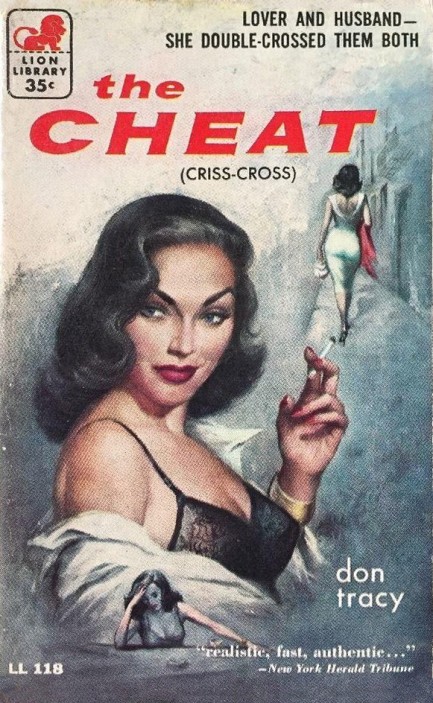
Above is a cover for Don Tracy's novel The Cheat, originally published as Criss-Cross in 1934, with this Lion edition coming in 1956 with Charles Copeland cover art. This is a good book, but if you're seeking artful prose you might as well keep looking. 1934 was early in the game for hard-boiled fiction. A few authors were doing visionary work but the form was still establishing its parameters. What attracted readers was that these were new types of stories—frank, violent, and centered around hard luck protagonists, ruthless villains, and women who were to varying degrees breathtakingly beautiful, sexually ravenous, and totally amoral.
The Cheat is about a boxer named Johnny Thompson. The Depression has drained the profit from boxing, so for the moment Johnny is an armored car guard, riding shotgun for payroll deliveries. He's occasionally going out with Anna, who's far too beautiful for the likes of him and mainly just likes to have money spent on her. Johnny doesn't have much of that, which means he has no real shot with Anna. He coasts along in financial and romantic limbo until Anna breaks his heart by suddenly marrying a neighborhood slickster named Slim Dundee.
So many of these pulp novels hinge upon sex, but it couldn't be explicitly stated. Tracy is fairly clear about it here, though. Johnny thinks he's ugly yet refuses to consort with women he considers to be of inadequate quality, so he's sexually inexperienced. He isn't a virgin, but it's been years since his first couple of sexual encounters. Anna is his unattainbale dream. He's never even kissed her, but her willingness to associate with him provided his life with hope. He lost that when she married, but she later shocks him by finally offering herself to him, vows be damned. We get a clear sense of what it means to Johnny:
I bit my knuckles thinking about it and how sweet—oh my God—it would be, but I wouldn't take it. [snip] Every hour was full of pictures of Anna. Anna as I'd seen her and Anna as I'd never seen her, but could if I went there the next night. Anna, naked. Anna, in my arms, looking up at me. I kept seeing her and feeling her body under me and her open mouth on my mouth.
So hot she makes him bite his knuckles. That's hot. Johnny virtually flogs himself, telling himself not to give in, not to betray Slim, not to accept Anna's baffling out-of-the-blue offer, but it's useless of course. He goes, she meets him at the door in a kimono and nothing else, his fuses all blow, and nature takes its course:
I remember sobbing, although I wasn't really crying, when the first deep contentment began to rub out the ache I'd had in me for so long.
Well, that gets to the point. And it's a point we've been making for years. These guys don't get into trouble because of mere sex. They get into trouble because of sex as they never imagined it could be—in this case sex that makes him “not really” cry. Yowsa. His reaction has largely to do with finally attaining what he thought he was not good enough to have, in effect validating his entire existence, but there's no doubt the heights of sheer physical pleasure bring it on too. We picture him drying his wet eyes with a corner of the sheet and telling Anna, “I'm sorry. It's not you, it's me.” Needless to say, he's hooked, and who wouldn't be?
During subsequent sessions Anna keeps her, ahem, guard up, and Johnny enjoys every moment, despite feelings of guilt for being a backstabber. Then comes the pivotal day when Slim approaches him with an idea to rob the armored car—with Johnny as the inside man. Anna is on board with the plan, so clearly if he refuses she might not let him be her inside man anymore. Where it goes from there we won't reveal. We'll only say that The Cheat overcomes its rudimentary feel and provides considerable entertainment, which is the next best thing to actually being well written. And for those who enjoy their crime thrillers with motion and sound, a pretty good movie was made of it in 1949. Chose either or both. You'll win regardless.
 Los Angeles and the invention of Flight. 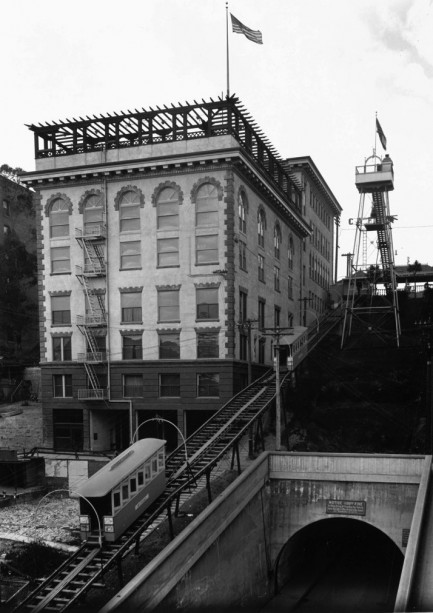
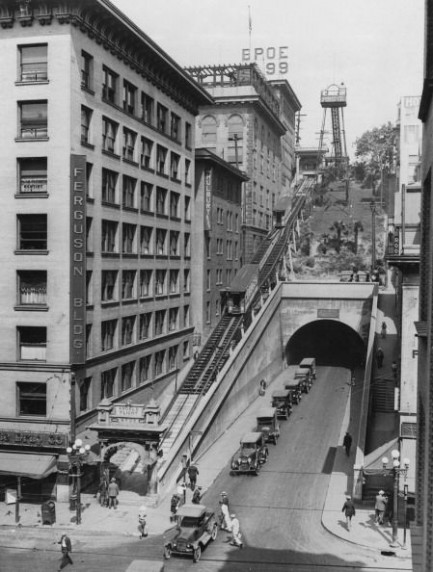 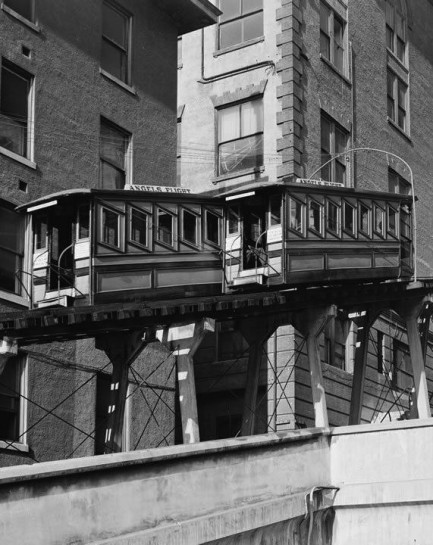 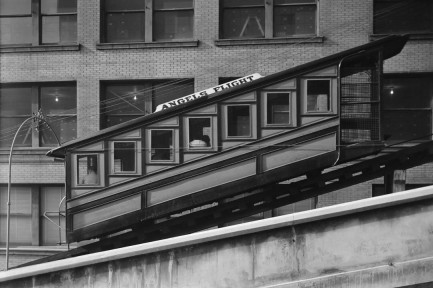 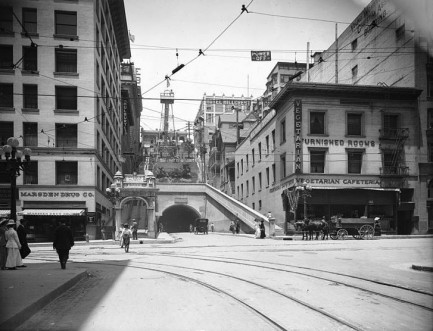 
The above photos show the historic funicular railway Angels Flight, which opened in downtown Los Angeles in 1901 in the Bunker Hill area, with tracks running from Hill Street up a steep incline to Olive Street. There are only a few vintage funicular railways left in the U.S. Angels Flight—along with the impressive Monongahela Incline and the Duquesne Incline, both located in Pittsburgh—is among the most famous. But it didn't operate without interruption. It closed in 1969 when Bunker Hill was redeveloped—in reality a destruction of an entire historic working class neighborhood—and reopened a block south in 1996. The railway's historical significance is architectural, but also cinematic. It appears in quite a few vintage films, most notably in Hollow Triumph, Night Has a Thousand Eyes, Act of Violence, Criss Cross, M, and Kiss Me Deadly.
The area near Angels Flight is set for a new redevelopment, as adjacent Angels Knoll, one of the last pieces of greenery in downtown Los Angeles, is to be bulldozed for another of the supposedly-mixed-use-but-really-millionaires-only skyscraper complexes that are popping up all over the world as a way for one percenters to park their money. Angels Flight will survive this new construction, at least for now, though it will be dwarfed by a forty story glass highrise mere feet to its south. Well, L.A. has rarely let the environment or historical significance stand in the way of making money, and when you look at it that way, the fact that Angels Flight survives at all to this day may be proof of a higher power.
 Why did Lancaster cross the mob? To get to DeCarlo's side. 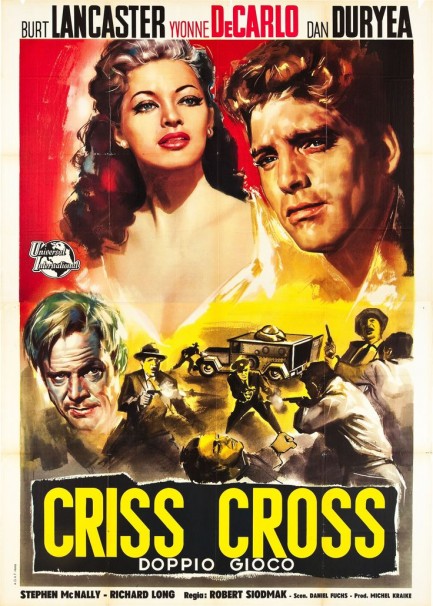
This is a beautiful poster for Doppio Gioco, better known as the U.S. film noir Criss Cross, with Burt Lancaster and Yvonne DeCarlo. We were unable to determine who painted the piece, but it's a bang-up job. As for the movie, Burt Lancaster comes up with one of the classic terrible ideas in film noir history, and that's really saying something, because the genre practically hinges on cockamamie schemes. We talk about it in our brief write-up of the film here. Doppio Gioco opened In Italy today in 1949.
 Bank heist goes every which way except the right way. 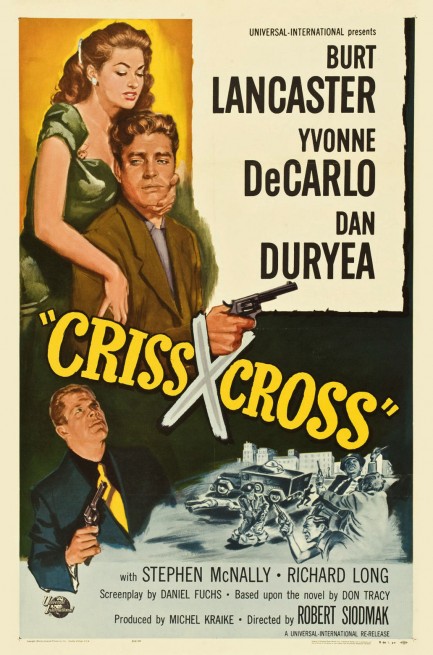
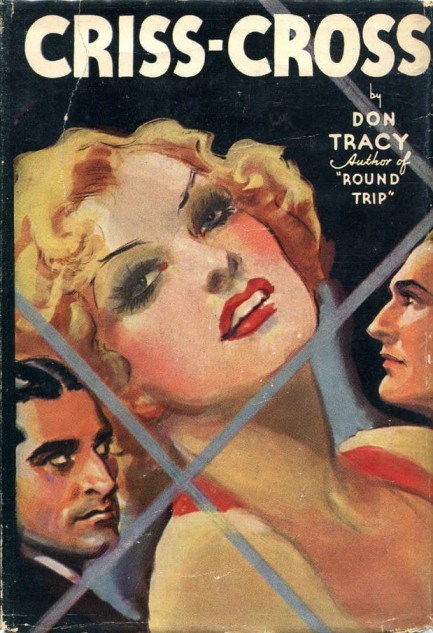 This year's Noir City Film Festival opens with the 1949 heist drama Criss Cross. Based on a bestselling novel of the same name by Don Tracy, it's the story of man played by Burt Lancaster who returns to Los Angeles after some years away to find that his ex-wife Yvonne De Carlo has hooked up with a local gangster. The exes rekindle their flame, but when it looks as if the gangster has caught them in the act Lancaster spontaneously cooks up a story about how he was putting together a plan to rob the armored car service for which he works. This year's Noir City Film Festival opens with the 1949 heist drama Criss Cross. Based on a bestselling novel of the same name by Don Tracy, it's the story of man played by Burt Lancaster who returns to Los Angeles after some years away to find that his ex-wife Yvonne De Carlo has hooked up with a local gangster. The exes rekindle their flame, but when it looks as if the gangster has caught them in the act Lancaster spontaneously cooks up a story about how he was putting together a plan to rob the armored car service for which he works.
Lancaster's robbery idea is not only designed to deflect the gangster's suspicion away from the affair, but to also fund the future he envisions with De Carlo when she and him run away. This scheme, which strains credulity, is probably one of the most obviously terrible ideas in the long, celebrated history of doomed ideas in film noir, but with good direction by Robert Siodmak, who had worked with Lancaster on The Killers, and good acting by all involved, the film concludes on the positive side of the effectiveness ledger. Numerous excellent Los Angeles exteriors, including at Union Station and on now mostly leveled Bunker Hill, make this noir an important time capsule as well, an aspect that increases its appeal. And an excellent musical number by Esy Morales & His Rhumba Band gives the proceedings a further boost. All in all, Criss Cross is a winner.
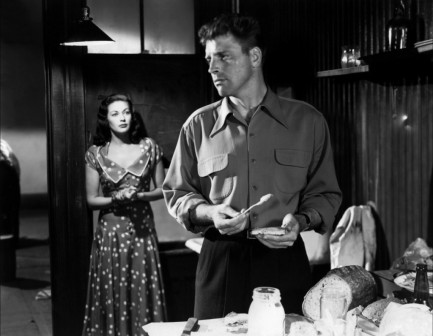 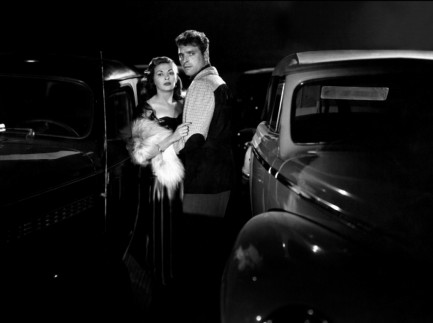 
|
 |

The headlines that mattered yesteryear.
2003—Hope Dies
Film legend Bob Hope dies of pneumonia two months after celebrating his 100th birthday. 1945—Churchill Given the Sack
In spite of admiring Winston Churchill as a great wartime leader, Britons elect
Clement Attlee the nation's new prime minister in a sweeping victory for the Labour Party over the Conservatives. 1952—Evita Peron Dies
Eva Duarte de Peron, aka Evita, wife of the president of the Argentine Republic, dies from cancer at age 33. Evita had brought the working classes into a position of political power never witnessed before, but was hated by the nation's powerful military class. She is lain to rest in Milan, Italy in a secret grave under a nun's name, but is eventually returned to Argentina for reburial beside her husband in 1974. 1943—Mussolini Calls It Quits
Italian dictator Benito Mussolini steps down as head of the armed forces and the government. It soon becomes clear that Il Duce did not relinquish power voluntarily, but was forced to resign after former Fascist colleagues turned against him. He is later installed by Germany as leader of the Italian Social Republic in the north of the country, but is killed by partisans in 1945.
|

|
|

It's easy. We have an uploader that makes it a snap. Use it to submit your art, text, header, and subhead. Your post can be funny, serious, or anything in between, as long as it's vintage pulp. You'll get a byline and experience the fleeting pride of free authorship. We'll edit your post for typos, but the rest is up to you. Click here to give us your best shot.

|
|


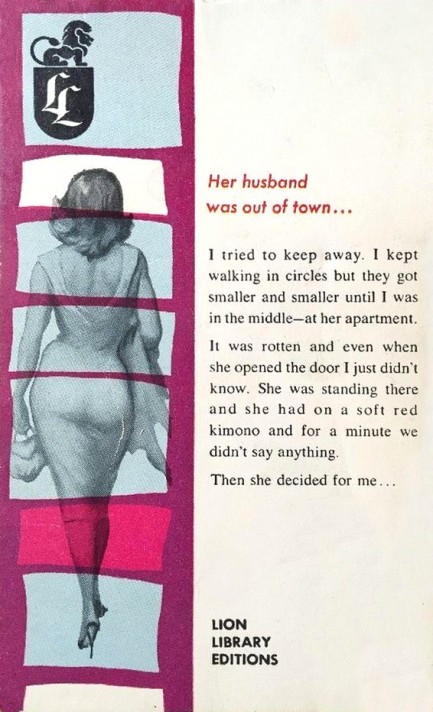











 This year's Noir City Film Festival opens with the 1949 heist drama Criss Cross. Based on a bestselling novel of the same name by Don Tracy, it's the story of man played by Burt Lancaster who returns to Los Angeles after some years away to find that his ex-wife Yvonne De Carlo has hooked up with a local gangster. The exes rekindle their flame, but when it looks as if the gangster has caught them in the act Lancaster spontaneously cooks up a story about how he was putting together a plan to rob the armored car service for which he works.
This year's Noir City Film Festival opens with the 1949 heist drama Criss Cross. Based on a bestselling novel of the same name by Don Tracy, it's the story of man played by Burt Lancaster who returns to Los Angeles after some years away to find that his ex-wife Yvonne De Carlo has hooked up with a local gangster. The exes rekindle their flame, but when it looks as if the gangster has caught them in the act Lancaster spontaneously cooks up a story about how he was putting together a plan to rob the armored car service for which he works.






































































